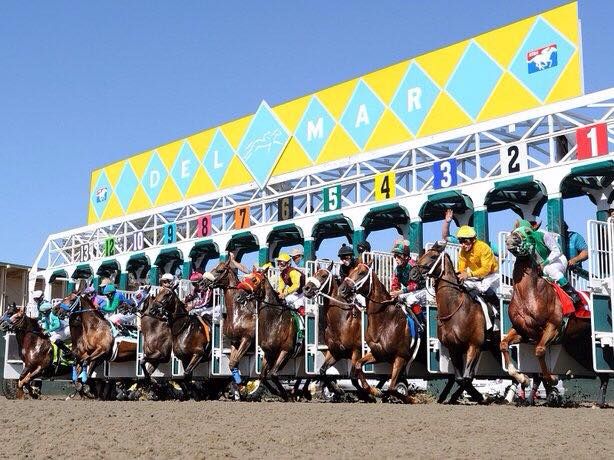Introduction: The Smarter Way to Spread Your Bets
In horse racing, most bettors pick a single horse and hope it crosses the finish line first. But what if you could bet on multiple horses in the same race — and still lock in a profit regardless of which one wins? That’s the idea behind Dutching, a strategy designed to spread your risk intelligently and increase your chances of success.
Popular among professional bettors and serious horse racing betting hobbyists, Dutching is a mathematical approach that helps you balance your stakes across several horses to guarantee a consistent return — provided one of your selections wins. It’s not a shortcut to fortune, but when applied correctly, it’s a disciplined way to profit from races where you have several strong contenders.
What Is Dutching?
Dutching is a betting method that allows you to back more than one horse in the same race and still earn a profit if any of them wins. The key is to adjust your stake on each horse according to its odds so that your total return remains roughly the same, no matter which horse finishes first.
This technique was first popularized by the legendary bettor and crime figure Dutch Schultz, who used it in the early 20th century to exploit value in multiple selections. Today, Dutching is a respected strategy used in sports and horse racing markets around the world.
The Basic Principle
Let’s imagine a race with three horses you think have the best chances to win: Horse A, Horse B, and Horse C. You want to bet on all three, but you also want to ensure that whichever wins, your profit is the same.
Dutching works by dividing your total stake proportionally based on each horse’s odds. The shorter the odds (i.e., the more likely to win), the smaller your stake should be; the longer the odds, the larger your stake.
The Dutching Formula
To calculate your stakes, you can use this simple formula:
Stake = (Total Investment × (1 / Horse Odds)) / Sum of (1 / Horse Odds for all selections)
Here’s an example:
-
You want to invest £60 total.
-
The odds for your three chosen horses are:
-
Horse A: 3.0 (2/1)
-
Horse B: 5.0 (4/1)
-
Horse C: 6.0 (5/1)
-
First, calculate 1 divided by each set of odds:
-
Horse A: 1 / 3.0 = 0.333
-
Horse B: 1 / 5.0 = 0.200
-
Horse C: 1 / 6.0 = 0.166
Total = 0.333 + 0.200 + 0.166 = 0.699
Now divide each by the total and multiply by your total stake (£60):
-
Horse A: (0.333 / 0.699) × 60 = £28.60
-
Horse B: (0.200 / 0.699) × 60 = £17.15
-
Horse C: (0.166 / 0.699) × 60 = £14.25
If any of the three horses wins, your return (stake × odds) will be roughly the same: about £85–£86, giving you a £25 profit after your £60 total investment.
When to Use Dutching
Dutching isn’t for every race. It works best in situations where:
-
You’ve identified two or three strong contenders with realistic chances of winning.
-
The odds are favourable enough that spreading your stake doesn’t eliminate profit.
-
You want to minimize risk in unpredictable races.
It’s especially effective when favourites appear vulnerable, and the field contains several evenly matched horses. Dutching gives you multiple paths to victory without relying on a single outcome.
Types of Dutching
There are two main approaches to Dutching:
-
Level Profit Dutching: You adjust your stakes so that your net profit is the same no matter which horse wins. This is the most common form.
-
Weighted Dutching: You intentionally vary your profit levels depending on confidence. For example, you might want a higher return if your main pick wins but still secure a smaller profit if one of your secondary choices does.
Weighted Dutching allows for flexibility when you have stronger conviction about one selection but still want coverage on others.
Dutching and Odds Movement
Timing is crucial in Dutching. Because horse racing odds change as bets are placed, your calculated balance might shift before the race starts. To maintain an accurate Dutching setup:
-
Place bets as close to race time as possible.
-
Use betting tools or apps that automatically adjust stakes based on live odds.
-
Recalculate manually if significant market changes occur.
Sticking to your calculations ensures your risk remains even and your profit consistent.
Common Mistakes to Avoid
While Dutching can be powerful, it’s not foolproof. Avoid these common pitfalls:
-
Backing too many horses: Each additional horse reduces your overall profit margin. Generally, limit yourself to two or three strong contenders.
-
Ignoring takeout or commission: In pari-mutuel betting, track takeouts can affect your total return, slightly lowering profits.
-
Forgetting to check market value: Dutching doesn’t eliminate the need for value — if all your horses are underlays, your expected return still declines.
-
Emotional betting: Stick to calculations, not hunches. The power of Dutching lies in discipline.
Combining Dutching with Handicapping
The best Dutching strategies come from solid handicapping. Before calculating stakes, evaluate:
-
Track conditions: Horses that thrive on the day’s surface may offer hidden value.
-
Form trends: A horse stepping down in class or improving over recent runs could outperform its odds.
-
Jockey and trainer combinations: Consistent partnerships often signal reliability under pressure.
Use your handicapping insights to select two or three horses with legitimate winning potential, then let Dutching mathematics handle the rest.

